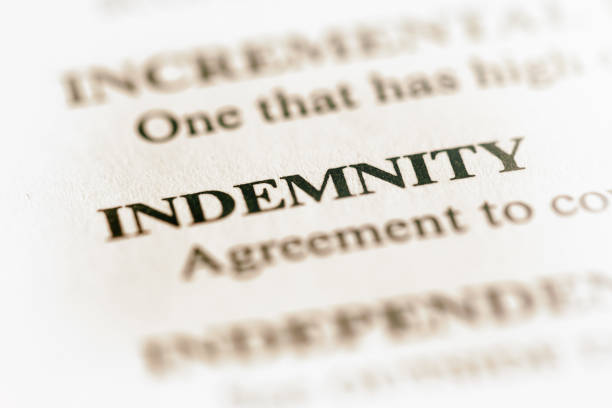The Nuances of Indemnification: A Deeper Dive
In our previous post, we introduced the concept of indemnification and its significance in contract law. It was an exciting ride as we explored key topics on indemnification such as understanding indemnification, the legal framework of indemnification, drafting effective indemnification, etc. You can catch up on the full talk here. Today, we’ll dive deeper into the nuances of this powerful legal tool, exploring the different types of indemnification, key considerations for drafting indemnification clauses, and the crucial role of insurance in enhancing protection.
A Deeper Dive into Indemnification
As we discussed earlier, indemnification clauses are essential in contract law, providing a shield against legal storms. However, not all indemnification clauses are created equal. Let’s examine the different types of indemnification and their implications:
- Broad Form Indemnity: Broad form indemnity provides the most comprehensive coverage, obligating the indemnifying party to cover virtually any loss or damage suffered by the indemnified party. Okay, let’s put this in another way. Broad-form indemnity requires the indemnitor to pay for not just the losses for which it is responsible but also for losses solely caused by the indemnitee.
- Intermediate Form Indemnity: Intermediate form indemnity offers a middle ground, covering specific types of losses or damages, such as those arising from negligence of the indemnity. This means that the indemnitor pays for the indemnitee’s negligence unless the indemnitee’s negligence is the main reason for the loss.
- Limited Form Indemnity: Limited form indemnity (also called limited liability indemnity clause) provides the narrowest protection, covering only specific losses directly caused by the indemnifying party’s actions or omissions.
Choosing the appropriate type of indemnity depends on the parties’ specific needs and risk tolerance. While a broad indemnity form might seem attractive, it could expose your business to excessive risk.
Crafting Effective Indemnification Clauses
When drafting indemnification clauses, it’s essential to consider these factors:
- What is the Scope of Coverage: Clearly define the types of losses covered by the indemnity.
- Indemnified Parties: Specify who is protected by the clause (e.g., the company, its employees, or third parties).
- Who are the Indemnifying Parties: Identify who is responsible for providing indemnity.
- What are the Limitations and Exclusions: Outline specific circumstances where the indemnity does not apply.
- What are the Insurance Requirements: Consider requiring the indemnifying party to maintain insurance coverage.
- What Choice of Law are we adopting: Specify the governing law for interpreting the indemnity clause.
The Role of Insurance in Indemnification
Insurance is vital in indemnification, serving as a financial safety net for the indemnifying party. By requiring insurance coverage, you can:
- Enhance Enforceability: Strengthen the enforceability of your indemnification clause.
- Increase Protection: Increase your level of protection against potential losses
Let’s break down the key considerations for insurance requirements:
- Type of Insurance: Specify the required insurance coverage (e.g., general liability, professional liability, or product liability).
- Policy Limits: Determine the minimum insurance coverage amounts to ensure adequate protection.
- Named Insured: Indicate who should be named as the insured on the policy.
- Evidence of Insurance: Require the indemnifying party to provide proof of insurance.
Real-World Examples and Best Practices
To illustrate the practical application of indemnification clauses, let’s examine a few examples:
- Construction Contracts: Indemnification clauses are commonly used in construction contracts to allocate risks between owners, contractors, and subcontractors.
- Technology Contracts: In the technology sector, indemnification clauses are often used to protect against intellectual property infringement or data breaches
In the construction industry, contractors may require general liability insurance to protect against claims arising from accidents or injuries on the job site. Similarly, in technology contracts, cybersecurity insurance can provide financial coverage against data breaches or other cyber incidents.
Conclusion
As we’ve explored the intricacies of indemnification, it’s clear that this legal concept plays a vital role in protecting businesses and individuals from potential losses. To ensure you’re fully equipped to navigate the complexities of indemnification, let’s recap the key takeaways from this post:
- Understand the types of indemnification: Broad Form, Intermediate Form, and Limited Form Indemnity each offer varying levels of protection.
- Craft effective indemnification clauses: Consider the scope of coverage, indemnified parties, indemnifying parties, limitations, insurance requirements, and choice of law.
- Leverage insurance for enhanced protection: Require insurance coverage to strengthen enforceability and increase protection against potential losses.
- Apply indemnification in real-world scenarios: Construction contracts, technology contracts, and other industries can benefit from well-drafted indemnification clauses.
- Stay informed and adapt: Continuously update your knowledge of indemnification to ensure robust protection against legal storms.
Disclaimer: While this blog post provides general information, it’s not a substitute for legal advice. It’s always recommended to consult with a lawyer for specific legal counsel










